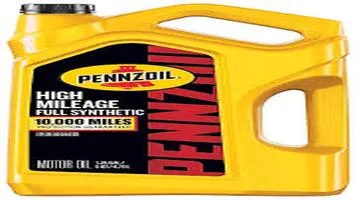Orthotic Insoles: Stepping Towards Comfort and Health
Orthotic insoles are custom-designed shoe inserts that provide support, alignment, and comfort to the feet. They are crafted to address various foot-related issues such as flat feet, plantar fasciitis, overpronation, and arch pain. By redistributing pressure across the foot, orthotic insoles help reduce discomfort and prevent injuries during daily activities or sports. Made from a variety of materials, including foam, gel, and plastic, they cater to different levels of support and cushioning. Often prescribed by podiatrists, these insoles can be tailored to an individual's specific foot shape and condition, promoting better posture and overall biomechanical efficiency. Whether used for medical reasons or general comfort, orthotic insoles enhance foot function and contribute to improved mobility and quality of life.

Orthotic insoles, though often overlooked, can make a world of difference for those struggling with foot discomfort, alignment issues, and even chronic pain. As someone who has battled plantar fasciitis and flat feet, my quest for the perfect insole has been long and arduous. However, my journey has allowed me to thoroughly evaluate the benefits and potential drawbacks of these seemingly simple devices.
The Role of Orthotic Insoles
Orthotic insoles are designed to provide support, correct foot posture, and distribute pressure more evenly across the foot. They can be custom-made or purchased over-the-counter, and they aim to alleviate various conditions such as plantar fasciitis, flat feet, bunions, and general foot pain. For athletes, they offer enhanced performance by ensuring proper foot alignment and minimizing injury risks. For the everyday individual, they offer relief from the strain of prolonged standing or walking.
My Personal Experience
When I first slipped a pair of orthotic insoles into my shoes, the immediate sensation was one of unfamiliar support. It was as if my feet were being cradled and guided with each step. Initially, this new support felt slightly awkward, but within a week, my feet had adapted. The chronic heel pain that had plagued my mornings began to subside, and I noticed a marked improvement in my overall posture.
Impact on Foot Health
One of the most significant benefits of orthotic insoles is their ability to mitigate and often eliminate pain. For someone like me, who has suffered from plantar fasciitis, the right insole can mean the difference between a painful day and a pain-free one. The arch support provided by orthotic insoles helps to distribute pressure more evenly, reducing strain on the plantar fascia. This, in turn, minimizes inflammation and allows for quicker healing.
Flat feet, another common issue, can also be addressed with orthotic insoles. By providing the necessary arch support, these insoles can help to realign the foot, reducing the risk of overpronation and the associated knee and back pain. For those with high arches, orthotic insoles offer cushioning and support, preventing the foot from rolling outward and reducing the likelihood of ankle injuries.
Custom vs. Over-the-Counter
Choosing between custom-made and over-the-counter orthotic insoles can be challenging. Custom insoles are tailored to the unique shape and needs of your feet, offering a personalized solution to foot problems. They are often recommended for severe conditions or when over-the-counter options fail to provide adequate relief. However, custom insoles are significantly more expensive, often costing several hundred dollars.
On the other hand, over-the-counter insoles are more affordable and readily available. They come in various shapes, sizes, and support levels, making it easier to find a pair that suits your needs. While they may not offer the same level of customization, many people find them to be an effective solution for mild to moderate foot issues.
Material and Design
The material and design of orthotic insoles play a crucial role in their effectiveness and comfort. Common materials include foam, gel, and hard plastic. Foam insoles are typically the most comfortable, offering cushioning and support, but they may wear out more quickly. Gel insoles provide excellent shock absorption, making them ideal for high-impact activities like running. Hard plastic insoles offer the most robust support and durability but may require a break-in period to become comfortable.
The design of the insole should also be considered. Look for insoles with deep heel cups, which help to stabilize the foot and improve alignment. Arch support should match the contours of your foot, providing support without causing pressure points. Additionally, consider insoles with antimicrobial properties to prevent odor and bacterial growth.
Potential Drawbacks
While orthotic insoles offer numerous benefits, they are not without potential drawbacks. The initial adjustment period can be uncomfortable as your feet and body adapt to the new support. It's essential to wear the insoles for short periods initially, gradually increasing the duration as your feet become accustomed.
Some people may find that orthotic insoles do not fit well in all types of shoes. Thicker insoles may require larger shoe sizes or shoes with removable insoles. Additionally, while over-the-counter insoles are more affordable, they may not provide the same level of relief as custom-made options for severe foot conditions.
Conclusion
In conclusion, orthotic insoles are a valuable tool for anyone dealing with foot pain, alignment issues, or seeking enhanced comfort and support. Whether you opt for custom-made or over-the-counter insoles, the right pair can significantly improve your foot health and overall quality of life. While there may be an initial adjustment period and some challenges with finding the perfect fit, the long-term benefits far outweigh these minor inconveniences. For those on the fence, I highly recommend giving orthotic insoles a try – your feet will thank you.






